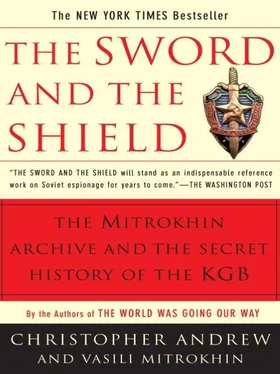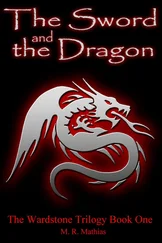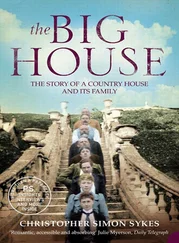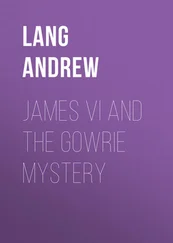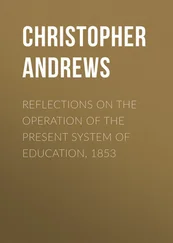There are many other “Rip Van Spies” whose memories of Cold War espionage are likely to be reawakened by Mitrokhin’s archive. Some will recognize themselves in the pages which follow. About a dozen important cases which are still being actively pursued—including several in leading NATO countries—cannot be referred to for legal reasons until they come to court. Only a small minority of the Soviet agents whose codenames appear in this volume, however, are likely to be prosecuted. But, as the SVR embarks on the biggest and most complex damage assessment in Russian intelligence history, it has to face the unsettling possibility that some of the spies identified by Mitrokhin have since been turned into double agents.
After each of the revelations from Mitrokhin’s archive mentioned above, the SVR undoubtedly conducted the usual damage assessment exercise in an attempt to determine the source and seriousness of the leak. Its official statement in 1996 (effectively reaffirmed as recently as June 1998), which dismissed as “absolute nonsense” the suggestion that the names of several hundred Soviet agents could possibly have been given by a defector to any Western intelligence agency, demonstrates that the conclusions of these exercises were very wide of the mark. Not until the publication of this book was announced in 1999 did the SVR seem to begin to grasp the massive hemorrhage of intelligence which had occurred.
SOME OF THE files noted by Mitrokhin give a vivid indication of the ferocity with which the Centre (KGB headquarters) has traditionally responded to intelligence leaks about its past foreign operations. The publication in 1974 of John Barron’s KGB: The Secret Work of Soviet Secret Agents, 53based on information from Soviet defectors and Western intelligence agencies, generated no fewer than 370 KGB damage assessments and other reports.The resident in Washington, Mikhail Korneyevich Polonik (codenamed ARDOV), was instructed to obtain all available information on Barron, then a senior editor at Reader’s Digest, and to suggest ways “to compromise him.” 54Most of the “active measures” used by the KGB in its attempts to discredit Barron made much of his Jewish origins, but its fabricated claims that he was part of a Zionist conspiracy (a favorite theme in Soviet disinformation) appear to have had little resonance outside the Middle East. 55
The active measures employed against some of the journalists who wrote articles based on Barron’s book were more imaginative. Doctored versions of blank “information cards” from the Austrian Stapo (security police) registry previously obtained by KGB agents were used to compromise Austrian journalists judged to have used material from KGB: The Secret Work of Soviet Secret Agents to undermine the “peaceloving” policies of the USSR. Fabricated entries on the cards prepared by Service A, the FCD active measures specialists, purported to show that the Stapo believed the journalists concerned to be hand-in-glove with the CIA. Photocopies of the cards were then circulated among the Austrian media. The files noted by Mitrokhin list other KGB countermeasures against Barron’s book in countries as far afield as Turkey, Cyprus, Libya, Lebanon, Egypt, Iran, Kuwait, Somalia, Uganda, India, Sri Lanka and Afghanistan. 56
The other study of the KGB which did the most to arouse the ire of the Centre was the history published in 1990 by Christopher Andrew and Oleg Gordievsky, KGB: The Inside Story of Its Foreign Operations from Lenin to Gorbachev, which drew on KGB documents and other information obtained by Gordievsky while working as a British agent inside the KGB from 1974 to 1985. 57The Centre predictably responded with active measures against both the book and its authors. 58(Some indication of its continuing hostility to Gordievsky is provided by the fact that, at the time of this writing, he is still under sentence of death in Moscow.) There was, however, one important new element in the reaction of the KGB, and of its chairman Kryuchkov in particular, to the publication of the history by Andrew and Gordievsky. In a top secret “Chairman’s Order” of September 1990 emphasizing the importance of influence operations and other active measures (“one of the most important functions of the KGB’s foreign intelligence service”), Kryuchkov instructed that “wider use should be made of archive material” to publicize a “positive” image of the KGB and “its more celebrated cases.” 59
The first approach to a Western writer offering material from KGB archives intended to create this “positive” image was to the mercurial John Costello, a freelance British historian who combined flair for research with a penchant for conspiracy theory. 60In 1991 Costello published a book on the mysterious flight to Britain fifty years previously of Hitler’s deputy Führer, Rudolf Hess, which drew on KGB records selected by the SVR as well as Western sources, and argued (implausibly, in the view of most experts on the period) that the key to the whole affair was a plot by British intelligence. 61Two years later, in collaboration with the SVR consultant (and former FCD officer) Oleg Tsarev, Costello published a somewhat less controversial biography of the inter-war Soviet intelligence officer Aleksandr Orlov which was described on the dustjacket as “The first book from the KGB archives—the KGB secrets the British government doesn’t want you to read.” The book began with tributes to the disgraced former chairman of the KGB, Vladimir Kryuchkov, and the last head of the FCD, Leonid Vladimirovich Shebarshin, for initiating the project. Costello added a note of “personal gratitude” to the SVR “for the ongoing support that they have given to this project which has established a new precedent for openness and objectivity in the study of intelligence history, not only in Russia, but the rest of the world.” 62
The Costello-Tsarev combination set the pattern for other collaborations between Russian authors selected or approved by the SVR and Western writers (who have included both well-known historians and a senior retired CIA officer): a project initially sponsored, but later abandoned, by Crown Books in the United States. For each volume in the series, which covers topics from the inter-war period to the early Cold War, the SVR has given the authors exclusive access to copies of previously top secret documents selected by it from KGB archives. All the books published so far have contained interesting and sometimes important new material; several are also impressive for the quality of their historical analysis. Their main weakness, for which the authors cannot be blamed, is that the choice of KGB documents on which they are based has been made not by them but by the SVR. 63
The choice is sometimes highly selective. During the 1990s, for example, the SVR has made available to Russian and Western authors four successive tranches from the bulky file of the KGB’s most famous British agent, Kim Philby. 64In order to preserve both Philby’s heroic image and the reputation of Russian foreign intelligence, however, the SVR has been careful not to release the record of Philby’s final weeks as head of the SIS station in the United States (the climax of his career as a Soviet spy), when money and instructions intended for Philby were mislaid, and he fell out with his incompetent controller who was subsequently recalled to Moscow in disgrace. Mitrokhin’s notes on those parts of the Philby file still considered by the SVR unsuitable for public consumption reveal this farcical episode for the first time. 65
The SVR has publicly denied even the existence of some of the files which it finds embarrassing. While writing a history of KGB-CIA rivalry in Berlin before the construction of the Wall, based partly on documents selected by the SVR, the Russian and American authors (one of them a former deputy head of the FCD) asked to see the file of the KGB agent Aleksandr Grigoryevich Kopatzky (alias Igor Orlov). The SVR replied that it had no record of any agent of that name. Its only record of “Igor Orlov” was, it claimed, of a visit made by him to the Soviet embassy in Washington in 1965, when he complained of FBI harassment and enquired about asylum in the USSR. 66Though still officially an unperson in the SVR version of Russian intelligence history, Kopatzky was in reality one of the KGB’s most highly rated agents. His supposedly non-existent KGB file, noted by Mitrokhin, reveals that he had no fewer than twenty-three controllers. 67
Читать дальше
